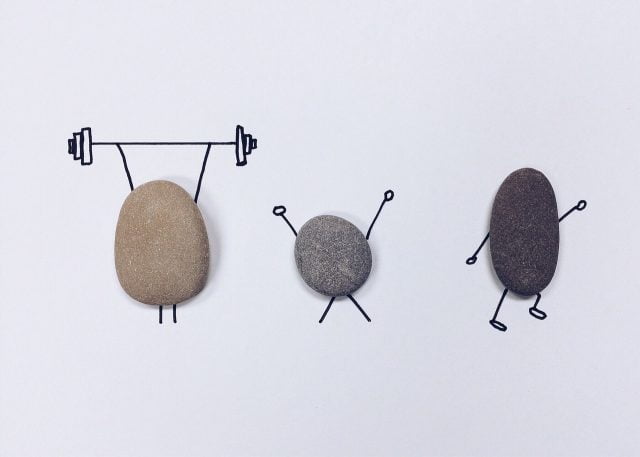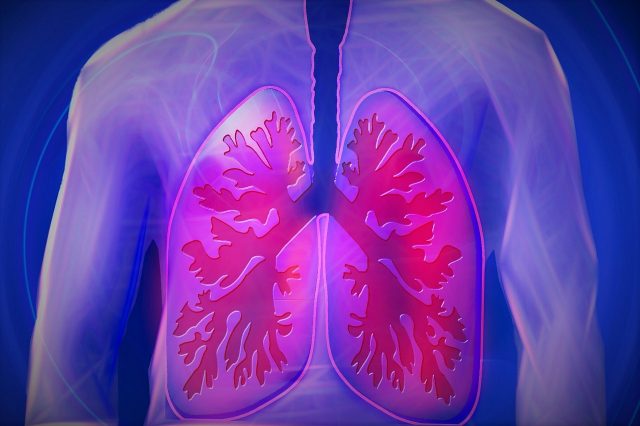Many people associate sprinting with track and field, but sprinting is more than just a sport. It is a very effective way to improve your overall health without having to slave away in the gym all day.
In order to reap the many benefits of sprint training, you need to develop a detailed plan that maximizes the various effects of sprinting. This plan should focus on using sprinting as a comprehensive exercise that provides not only the various benefits of a cardiovascular workout but also the benefits of weight training.
Prepping to Sprint
Proper sprinting preparation is important to ensure that you reap all the benefits of sprinting while reducing chances of injury.Such factors as the terrain and sprinting technique must be considered when preparing for sprints. You can sprint on almost any non-slippery surface that offers good traction. Depending on your fitness level, you can choose between flat surfaces such as tracks or hills and steps for more resistance.

Proper preparation is important to enjoy all the benefits of sprinting
Your sprinting technique is important to prevent any possible injuries. Make sure that your body is relaxed with your head and chin up and eyes looking forward at all times. Your chest should be out and your shoulders should be back while running. Your arms should remain at a 90 degree angle while sprinting, and remember to keep your knees high and hips forward.
Please be mindful that a good sprinting regimen should always start off with warm ups. The failure to properly warm up can result in injury, so it is highly recommended that you perform simple stretches prior to sprinting.

Unprepared sprinting can easily lead to injuries
Creating a Sprinting Regimen
A sprinting regimen should be based on your current fitness level to ensure that you are not pushing yourself too hard in the beginning.
In the beginning, you may want to perform sprints on level terrain such as a track or grass just to get your body use to proper technique and the necessary momentum and speed needed to sprint properly. Because sprinting requires more force from the muscles, it is best to incorporate sprinting gradually.
For example, a good basic sprinting regimen could include varied sprinting distances such as 200 meters for 3 rounds followed by 100 meters for 2 rounds and 50 meters for 1 round. As you decrease the sprinting distance, increase your speed for the best results.
When just starting out, it is best to sprint about one to two times a week with several days in between to allow the body to recuperate. It is best to perform this basic sprinting routine for several weeks before creating a sprinting regimen that is tailored to your fitness needs.
Ultimately, incorporating sprinting into your fitness regimen in the proper manner will allow you to reap its many benefits.

Incorporating sprinting into your fitness regimen will allow you to reap its many benefits
Benefits of Sprinting for Weight Loss
Sprinting is excellent for those seeking to lose significant amounts of weight in a short period of time. Sprinting actually promotes fat oxidation at a cellular level via AMPk activation. With the activation of AMPk, the body is placed into a higher metabolic rate which in turn increases the ability to lose weight.
Studies have shown that individuals that sprint on a long term basis (over three months) see significant boosts in their metabolism that is reflected in their ability to both lose weight and maintain such weight loss.
It is important to specify that sprinting is an effective weight loss exercise because it not only contributes to significant fat loss during and after sprinting. Sprinting creates a boost in the metabolic rate that extends fat burning benefits well after you have finished sprinting.
Since you continue to burn calories long after sprinting, sprints are a great way to help the body burn fat more efficiently.

Sprints are a great way to help the body burn fat more efficiently.
Sprinting Improves Heart and Circulatory Health
Boosting heart health via sprinting is done by getting your heart rate to the much coveted heart rate target number. Because sprinting is an exercise that requires that you use maximum effort, your heart is pushed to work harder.
Taking note that the heart is in fact a muscle, any exercise that gets the heart to pump harder will improve the strength and functioning of the heart and the entire cardiovascular system.
Studies show that women that performed sprint training for four weeks showed improved artery structure which resulted in significant reduction in inflammation that can lead to heart problems.
Sprinting also improves systolic blood pressure which is the pressure in the arteries during the contraction of the heart muscle. Thus, one of the sprinting effects on the body is improved heart function and lower blood pressure.

One of the many benefits of sprinting is improved heart function and lower blood pressure
Sprinting Increases Respiratory Health
Because sprinting requires the use of a significant amount of energy in a short period of time, breathing properly is essential. The breathing techniques used by many sprinters improves lung function because it forces you to incorporate the proper mechanics of breathing to ensure that the body is properly oxygenated.
Sprinting promotes the use of diaphragm or belly breathing which involves breathing so that the diaphragm expands into the abdomen which in turn causes the lungs to expand. This expansion of the lungs encourages greater oxygen intake which is essential for sprinters to ensure that the body receives the necessary oxygen to ward off fatigue.
Overtime, diaphragm breathing becomes the default breathing method for many sprinters, and this promotes better lung function in comparison to the shallow breathing that many of us are guilty of.
Also, breathing through the mouth while sprinting encourages more efficient release of carbon dioxide so that the body can properly intake more oxygen.

Sprinting helps promote better lung function
Sprinting Supports Bone Health
Studies have shown that sprinters typically have stronger bones when compared to other runners (joggers, mid and long distance runners). Sprinters have higher bone density throughout such areas as the hips, thighs and calves.
This is because sprinting encourages high impact movements performed in short intervals in varied directions which supports the building of bone mass.
Also, one of the many benefits of sprinting uphill is that it provides the same bone building benefits as weight bearing exercises. Ultimately, this helps to increase bone strength and reduce the chances of bone related injuries.
Sprinting for Muscle Growth
Muscle formation and strengthening from sprinting occurs in a number of ways. Sprinting promotes an increase in anabolic hormones which directly affect body composition.
The results of anabolic hormone effects on muscle composition differ between males and females.
- Males are more likely to see an increase in testosterone levels along with a decrease in inflammation causing cortisol which improves both the ability to loss fat and increase muscle mass and tone.
- Females see spikes in growth hormone (GH) which burns fat and increases lean muscle mass.
One of the biggest advantages of sprinting is that it provides muscle building benefits that are comparable to traditional weight bearing exercises.

One of the biggest advantages of sprinting is that it provides muscle building benefits that are comparable to traditional weight bearing exercises
Sprinting Reduces Insulin Levels
Sprinting directly effects insulin sensitivity by causing an increase in blood glucose levels. This increase in blood glucose is absorbed by the body for energy during sprinting.
This is definitely a benefit for anyone that wants a better way to control their blood sugar as sprinting decreases the amount of stored glucose in the body. The more glucose that is stored in the body, the more likely you are to develop conditions such as diabetes and other conditions such as hypertension.
Some people prefer to sprint in the early morning before eating as this allows the body to use more of the stored glucose as opposed to glucose that is newly made from eating food.

Sprinting helps reducing insulin levels, and thus preventing diabetes
The Benefits of Sprinting on Cognitive and Emotional Well Being
Not only does sprinting offer physical benefits, but it also provides numerous mental and emotional benefits.
Sprinting produces endorphins that help to improve mood and create a feeling of euphoria which can help combat conditions such as anxiety and depression.
It has also been proven to reduce inflammation in the brain and helps to balance hormones leading to mental clarity.
Because sprinting can be an intense, the mental strength needed for this form of exercise can really help people to expand themselves physically, emotionally and mentally. Sprinting encourages endurance which can only be accomplished by pushing past the pain and focusing intently.
Despite the effort required for sprinting, many people experience feelings of lightness and overall well-being after sprinting.
Why Sprinting Is Better Than Other Forms of Exercise
Sprinting is highly preferred over other forms of exercise because it provides all the benefits of a traditional heart pumping cardiovascular workout with muscle and bone building weight training.
Sprinting does not require any special training, or the use of special gym equipment to achieve its many benefits. Because of this, sprinting is one of the most convenient exercises to perform. Plus, you can lose significant amounts of weight and build muscle without spending hours in the gym. Ultimately, sprinting can help you achieve overall good health and well-being.






